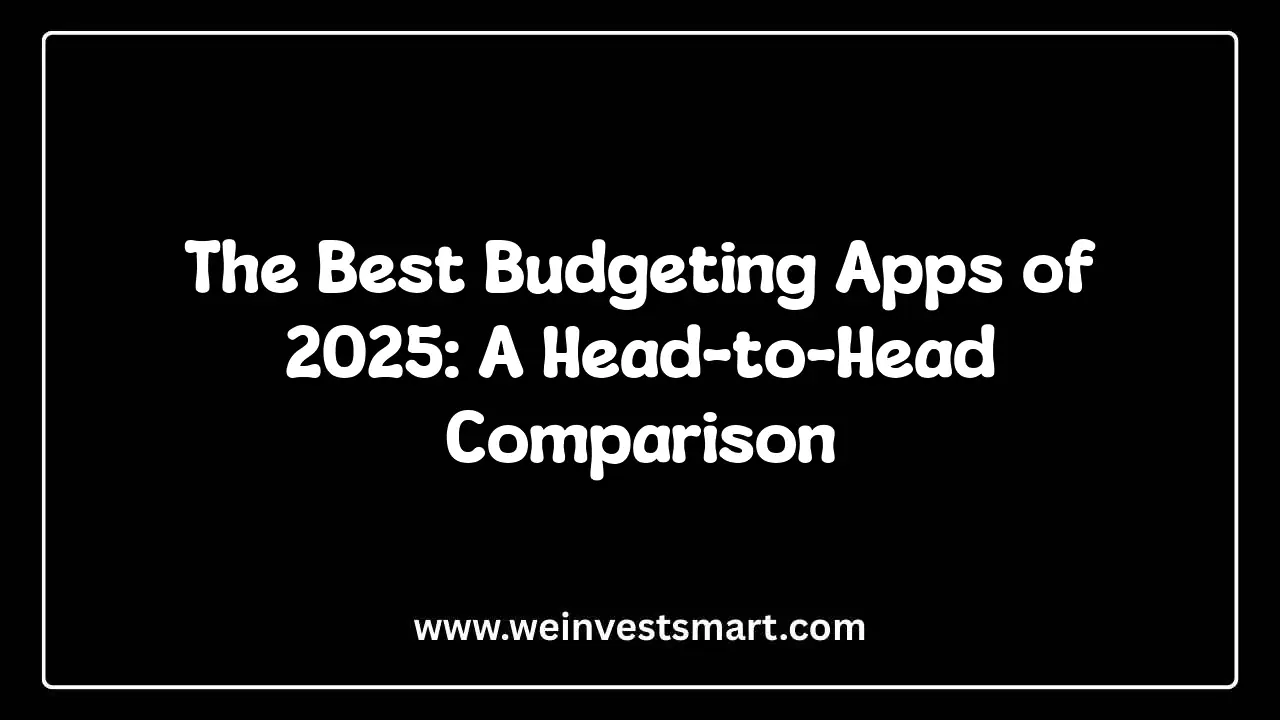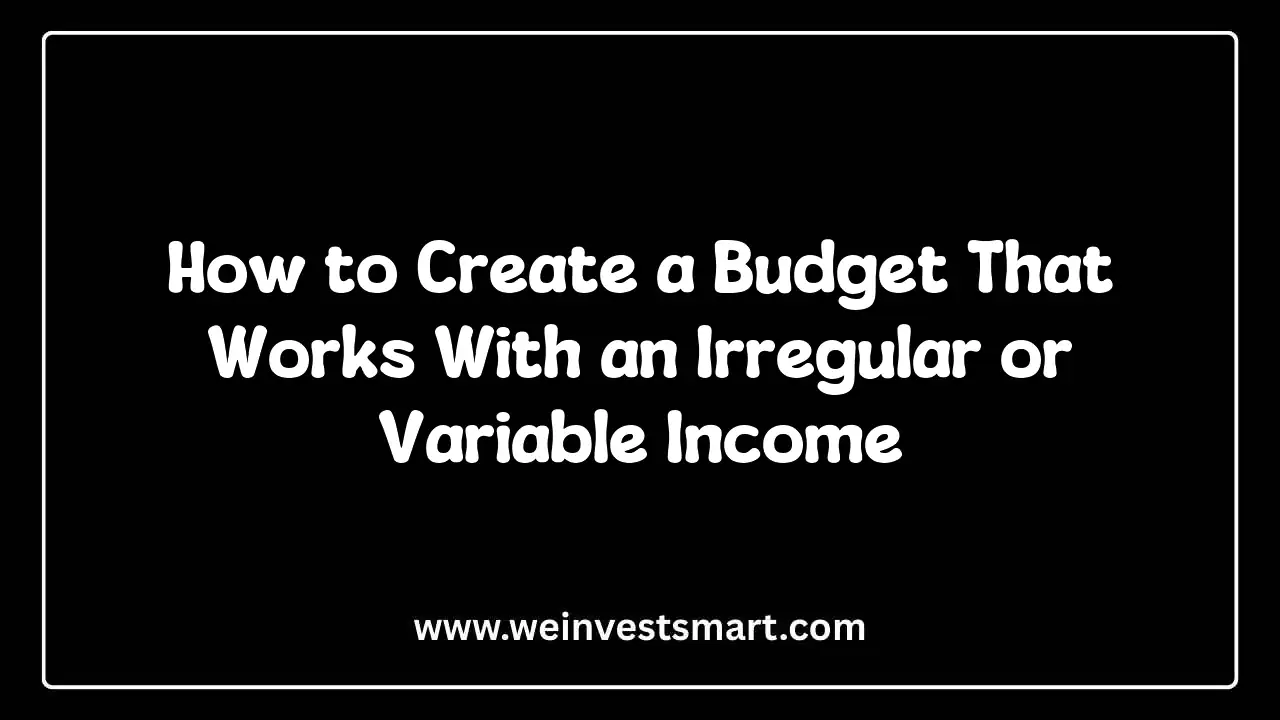· WeInvestSmart Team · budgeting · 10 min read
Your Annual Budget Review: A Step-by-Step Guide to Planning a Successful Financial Year
Most people drift through their financial lives. This step-by-step guide reframes the dreaded annual review into a powerful planning session to analyze your past spending, set meaningful goals, and design a budget that funds the life you actually want.
For most people, the idea of an “annual budget review” sounds about as appealing as a root canal. It conjures images of dusty spreadsheets, judgmental calculations, and a whole lot of guilt about last year’s financial missteps. We treat it like a chore to be avoided, a necessary evil at best. But here’s the uncomfortable truth: by avoiding this process, we are willingly choosing to be passengers in our own financial lives, letting the currents of habit and impulse steer the ship while we hope for the best.
Going straight to the point, drifting is not a strategy. A life of financial intention doesn’t just happen; it is designed. The annual budget review isn’t a post-mortem of your failures. It is the single most powerful planning session you can have all year. It’s the moment you stop, take the wheel, and consciously decide what you want your money to accomplish for you over the next 12 months. It’s not about restriction; it’s about direction.
Here’s where things get interesting. What if we reframed this entire process? What if, instead of a dreaded audit, your annual review became a blueprinting session for your ideal year? A time to ensure that your most valuable resource—your money—is fully aligned with your most important goals and values. And this is just a very long way of saying that the next hour you spend on this process can be the highest-leverage activity you do for your financial future. Let’s build your year on purpose.
Phase 1: The Financial Autopsy (Looking Back Without Judgment)
Before you can plan where you’re going, you need an honest assessment of where you’ve been. To understand this, we need to go to the heart of the problem, which most people don’t know: you are likely operating on a set of assumptions about your spending that are completely wrong. You think you know where your money went. The data will tell you the truth. The goal here is not to assign blame but to gather intelligence.
Your Step-by-Step Checklist:
Gather Your Data: Log into your banking and credit card accounts and download your transaction data for the entire past year. Most banks allow you to export this as a CSV file. If you use a budgeting app like YNAB or Monarch Money, this step is already done for you. The goal is to have a comprehensive record of every dollar that came in and went out.
Calculate Your “Big 3”:
- Total Income: How much money did you actually bring in after taxes?
- Total Spending: How much did you spend in total?
- Savings Rate: This is the most important metric. Calculate it with the formula:
(Total Savings / Total Income) * 100. For example, if you earned $60,000 and saved $9,000, your savings rate is 15%. This number is your financial health score for the year.
Categorize and Analyze Your Spending: This is the moment of truth. Tally up your spending into broad categories. Don’t get lost in the weeds; focus on the big buckets:
- Housing (Rent/Mortgage)
- Transportation (Car payments, gas, public transit)
- Food (Groceries AND Dining Out/Delivery)
- Debt Payments
- Subscriptions & Utilities
- Shopping & Entertainment
- Everything Else
The funny thing is, you will almost certainly be shocked by one or two of these numbers. The $4,000 you spent on takeout or the $800 on subscriptions you forgot about? This isn’t a failure; it’s a discovery. These are your “budget leaks”—the areas where your spending is unconscious and misaligned with your intentions.
Phase 2: The Goal-Setting Session (Designing Your “Why”)
With the hard data from last year in hand, you can now set meaningful, intelligent goals for the year ahead. A budget without a goal is just a glorified tracking spreadsheet; it lacks a soul. Your goals are the “why” that will motivate you to make different choices. This isn’t about vague resolutions like “save more money.” It’s about getting crystal clear on what you want your money to do.
How to Set Goals That Actually Work:
Dream Big, Then Get Specific (The SMART Method): Your goals must be Specific, Measurable, Achievable, Relevant, and Time-bound.
- Vague Goal: “I want to save for a vacation.”
- SMART Goal: “I will save $3,600 for a 10-day trip to Italy by automatically transferring $300 per month into my ‘Italy Adventure’ savings account, starting January 1st.”
- Vague Goal: “I want to pay off debt.”
- SMART Goal: “I will pay off my entire $5,000 Visa credit card balance by December 31st by making extra payments of $417 each month.”
Choose 1-3 Major Goals for the Year: Don’t overwhelm yourself. Pick a few high-impact goals that genuinely excite you. This could be building a full emergency fund, maxing out your Roth IRA, or saving for a down payment. These big goals become the pillars around which you build your new budget.
Connect Your Goals to Your Values: This sounds like a trade-off between practical finance and fluffy feelings, but it’s actually the key to long-term success. If one of your core values is “Security,” then your goal of “saving a $10,000 emergency fund” is no longer a chore; it’s an act of building a life with less anxiety. If you value “Freedom,” then your goal of “paying off your car loan” is about liberating your future income.
Phase 3: Building the New Year’s Budget (The Proactive Blueprint)
Now we combine the intelligence from Phase 1 with the motivation from Phase 2. This is where we create a proactive spending plan for the next 12 months.
Your Step-by-Step Checklist:
Project Your Income: Start with your expected take-home pay for the year. If you’re salaried, this is easy. If you have a variable income, use the “lowest-earning month” from last year as your conservative baseline to ensure you can always cover your necessities.
“Pay Yourself First”: The Non-Negotiables. Before you budget for anything else, you fund your goals. This is the most critical step.
- New Savings Goals: Look at the SMART goals you just set. The monthly savings amounts ($300 for Italy, etc.) are the first line items in your budget.
- Debt Repayment: The monthly payments for your debt goals ($417 for the Visa card) go in next.
- Retirement: Your planned contributions to your 401(k) or IRA.
List Your Fixed Costs: These are the predictable, recurring expenses you have little control over month-to-month. Use your data from last year to get realistic numbers.
- Rent/Mortgage
- Insurance (Health, auto, renters)
- Utilities (Use the average from last year)
- Car Payment
- Subscriptions (The ones you’ve consciously decided to keep!)
Allocate to Variable Spending (With Intention): This is where you have the most control. Look at what’s left of your income after goals and fixed costs. Now, allocate that money to your variable categories. Use your insights from last year’s review to be realistic but intentional.
- Groceries: Can you trim this by 10% through better meal planning?
- Dining Out/Takeout: Based on your review, what is a reasonable and intentional amount for this category?
- Gas/Transportation:
- Shopping, Hobbies, Entertainment:
But what do we do if the numbers don’t add up? And here is where things get interesting. If you run out of money before you’ve budgeted for everything, this is not a failure. This is the system working perfectly. It has revealed a gap between the life you want (your goals) and your current financial reality. Your job is now to go back and make adjustments, either by trimming your variable expenses further or finding ways to increase your income.
Phase 4: Automate Everything (Make Success the Default)
A budget is useless if you don’t follow it. The secret to consistency isn’t willpower; it’s automation. You want to build a system where your financial goals happen automatically in the background, without you having to think about them.
- Automate Your Savings: Set up automatic transfers from your checking account to your various savings accounts (Emergency Fund, Italy Fund, etc.) to occur the day after you get paid.
- Automate Your Bill Pay: Set up auto-pay for as many of your fixed bills as possible. This prevents late fees and ensures your core expenses are always covered.
- Automate Your Debt Payments: Set up automatic payments for your debt goals, including the extra amount you plan to pay.
You get the gist: by automating the important things, you free up your mental energy. The only thing left for you to manage manually is your day-to-day variable spending, which is a much simpler and less stressful task.
The Bottom Line: You Are Now the Architect
Completing an annual budget review is a profound act of self-care. It’s the moment you stop letting your financial life happen to you and start making it happen for you. You are no longer just a spectator watching your bank account; you are the architect, designing a structure that can support the life you want to live.
This process transforms money from a source of stress and confusion into a powerful tool for creation. And this is just a very long way of saying that the next year of your life doesn’t have to be a repeat of the last. It can be the year you finally fund your dreams, crush your debt, and build a future on your own terms. It all starts with this one, powerful planning session.
This article is for educational purposes only and should not be considered personalized financial advice. Consider consulting with a financial advisor for guidance specific to your situation.
Annual Budget Review FAQ
What is an annual budget review?
An annual budget review is a yearly process where you analyze your income and spending from the past 12 months, assess your progress toward your financial goals, and create a new, updated budget for the upcoming year. It’s a strategic check-in to ensure your financial plan still aligns with your life and priorities.
Why is it important to review your budget annually?
Life changes—incomes increase, expenses shift, and goals evolve. An annual review is crucial because it prevents your budget from becoming outdated and irrelevant. It helps you identify what worked and what didn’t, plug financial leaks, and proactively plan for new goals, ensuring you are actively directing your money instead of passively reacting to life.
What should be included in an annual financial review?
A comprehensive annual review should include a deep dive into your past year’s spending by category, an analysis of your income (especially if variable), a calculation of your savings rate, a review of your debt, and an assessment of your progress on big financial goals. This data forms the foundation for building your new year’s budget.
How do I set financial goals for the new year?
Effective financial goals are SMART: Specific, Measurable, Achievable, Relevant, and Time-bound. Instead of a vague goal like ‘save more,’ a SMART goal would be ‘Save $5,000 for a down payment by December 31st.’ Your goals should be inspired by your values and the life you want to live, which provides powerful motivation.
How do I create a new budget for the upcoming year?
Start with your projected income. Then, ‘pay yourself first’ by allocating funds to your new savings and debt-repayment goals. Next, list your fixed, non-negotiable expenses. Finally, allocate the remaining funds to your variable spending categories, using insights from your past year’s review to make them realistic. Automate as much as possible to ensure consistency.



